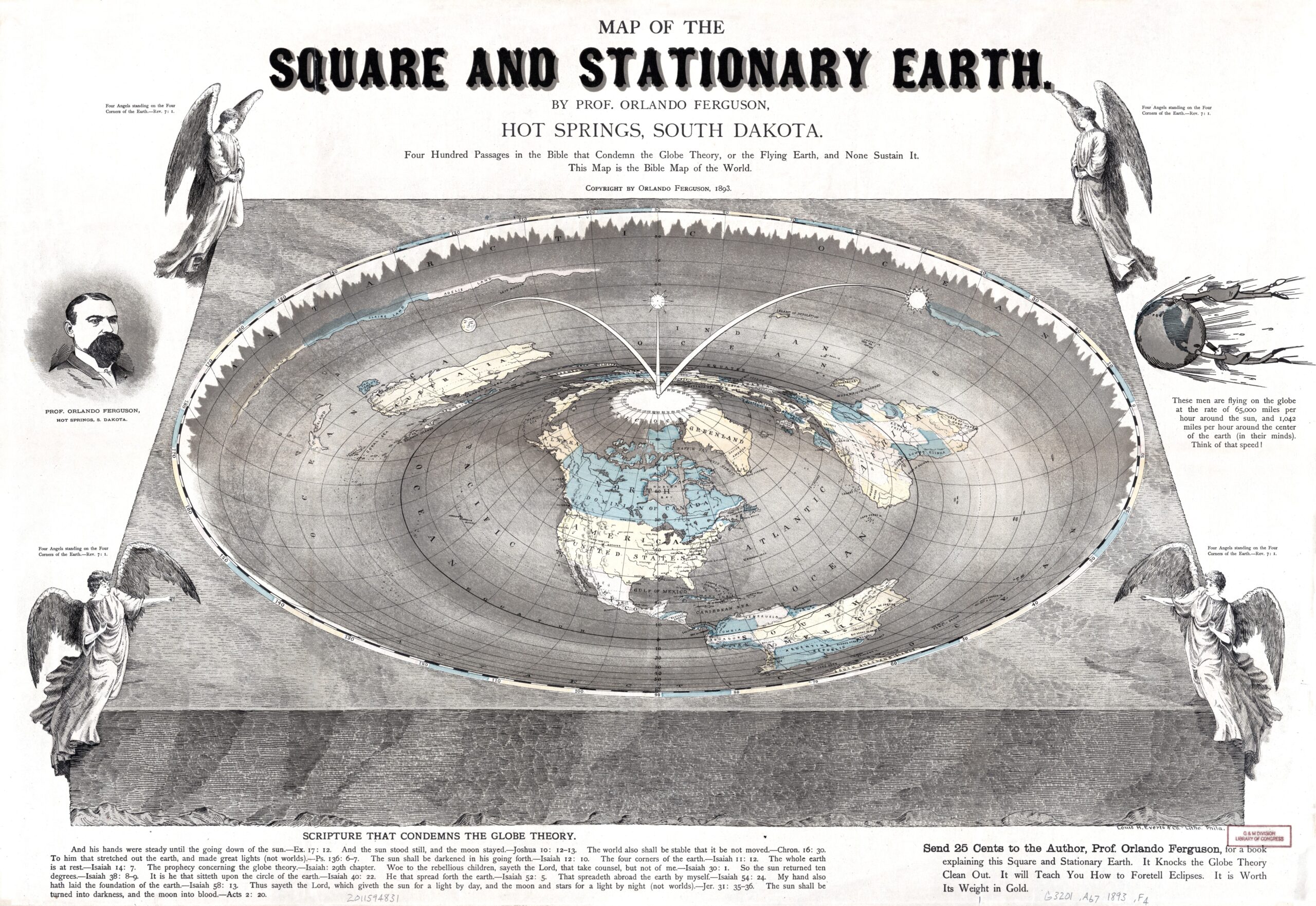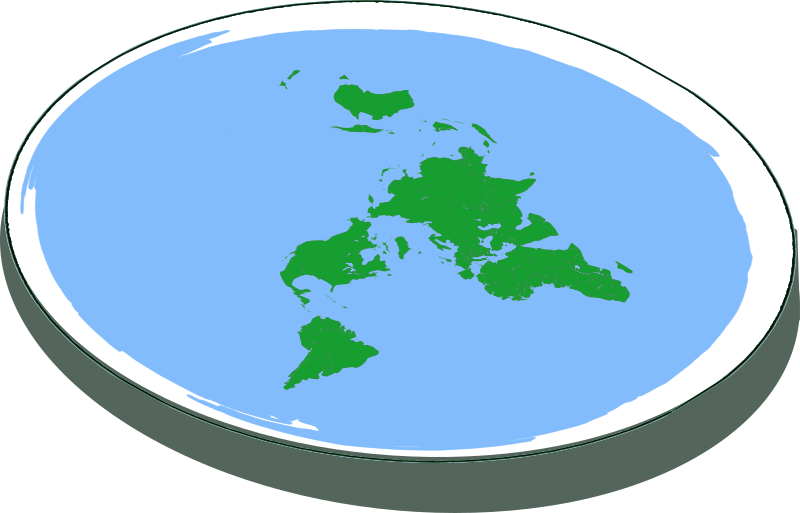
The concept of a flat Earth, once a mainstream belief in ancient civilizations, has seen a resurgence in recent years. Despite overwhelming scientific evidence supporting a spherical Earth, a small but vocal group of individuals, often referred to as “flat Earthers,” continues to promote the idea that our planet is flat. Central to their belief system is the flat Earth map, a representation of Earth that starkly contrasts with the globally accepted spherical model. This article delves into the origins, features, and controversies surrounding the flat Earth map, as well as its implications in today’s society.
Historical Background
The idea of a flat Earth dates back to ancient civilizations such as the Mesopotamians, Egyptians, and Greeks. Early flat Earth maps, like those created by the Babylonians, depicted the world as a flat disc surrounded by a vast ocean. However, as early as the 6th century BCE, Greek philosophers such as Pythagoras and later Aristotle provided evidence supporting a spherical Earth. By the Middle Ages, the spherical Earth model had become widely accepted among scholars.
Despite this historical consensus, the flat Earth theory persisted in some cultures and resurfaced prominently in the 19th century with the publication of Samuel Rowbotham’s book, Zetetic Astronomy: Earth Not a Globe. Rowbotham’s work laid the foundation for modern flat Earth beliefs, proposing that the Earth is a flat plane centered at the North Pole and bordered by a wall of ice, commonly referred to as the Antarctic ice wall.
Table of Contents
The Modern Flat Earth Map
The most widely recognized flat Earth map is known as the Azimuthal Equidistant Projection (AEP). This map is centered on the North Pole, with all landmasses and oceans radiating outward. The AEP map is often used by flat Earth proponents to argue against the spherical Earth model.
Key features of the flat Earth map include:
- North Pole Center: The map places the North Pole at the center, with the continents spread out around it. This is contrary to the spherical model, where the North Pole is simply one of the poles of the globe.
- Ice Wall: Surrounding the outer edge of the map is the Antarctic ice wall. Flat Earthers claim that this wall prevents people from falling off the edge of the Earth and acts as a barrier to exploration.
- Sun and Moon: In flat Earth cosmology, the sun and moon are depicted as small, local objects that move in circular paths above the flat Earth, providing light and day-night cycles.

Arguments and Counterarguments
Flat Earthers present several arguments to support their map and overall theory, often challenging conventional science. Some of their primary arguments include:
- Lack of Curvature: Flat Earthers assert that large bodies of water appear flat rather than curved, suggesting a flat plane.
- Flight Paths: They argue that certain flight paths, particularly those in the Southern Hemisphere, only make sense on a flat Earth map.
- Perspective and Horizon: They claim that the way objects disappear over the horizon can be explained by perspective rather than curvature.
In response, scientists and skeptics provide counterarguments grounded in established science:
- Curvature Evidence: There is ample evidence of Earth’s curvature, from photographs taken from space to the behavior of ships disappearing hull-first over the horizon.
- Geodesy and Satellites: The science of geodesy, which involves measuring Earth’s shape and gravity field, consistently supports a spherical Earth. Additionally, satellite imagery and GPS technology rely on a round Earth model.
- Consistency in Physics: The principles of gravity and orbital mechanics, which explain everything from why apples fall to how planets orbit the sun, are based on a spherical Earth and are confirmed by countless experiments and observations.
The Influence of Flat Earth Beliefs
The resurgence of flat Earth beliefs in the digital age can be attributed to several factors, including the rise of social media, increasing distrust in scientific institutions, and the appeal of contrarian thinking. Flat Earthers often use online platforms to share their ideas, organize conferences, and promote videos that challenge mainstream science.
This movement has led to significant public debates and media attention. While some view flat Earthers as harmless contrarians, others see the spread of pseudoscience as a dangerous trend that undermines scientific literacy and critical thinking.
Psychological and Sociological Perspectives
The persistence of flat Earth beliefs despite overwhelming scientific evidence raises questions about human psychology and the nature of belief. Several factors contribute to the appeal of such theories:
- Cognitive Dissonance: Flat Earthers often experience cognitive dissonance when confronted with evidence that contradicts their beliefs. Rather than changing their views, they may double down on their existing beliefs.
- Community and Identity: The flat Earth community provides a sense of belonging and identity for its members. Adhering to an unconventional belief can create a feeling of being part of a special, enlightened group.
- Distrust in Authority: Many flat Earthers harbor deep-seated distrust in governmental and scientific institutions. This skepticism is often fueled by conspiracy theories that claim the true nature of Earth is being deliberately concealed.
Educational and Scientific Responses
In response to the rise of flat Earth beliefs, educators and scientists have taken steps to reinforce the principles of critical thinking and scientific literacy. Educational initiatives focus on teaching students how to evaluate evidence, understand the scientific method, and recognize logical fallacies.
Science communicators and organizations also work to debunk flat Earth claims through public outreach, online content, and engagement with flat Earth proponents in debates and discussions. These efforts aim to promote a better understanding of science and encourage critical evaluation of extraordinary claims.

Conclusion
The flat Earth map, while a focal point for a small but vocal group of believers, stands in stark contrast to centuries of scientific evidence supporting a spherical Earth. The persistence of flat Earth beliefs highlights the challenges of combating pseudoscience in the digital age. By fostering critical thinking, scientific literacy, and open dialogue, society can better navigate the complex landscape of modern information and ensure that evidence-based understanding prevails.

Can you be more specific about the content of your article? After reading it, I still have some doubts. Hope you can help me.